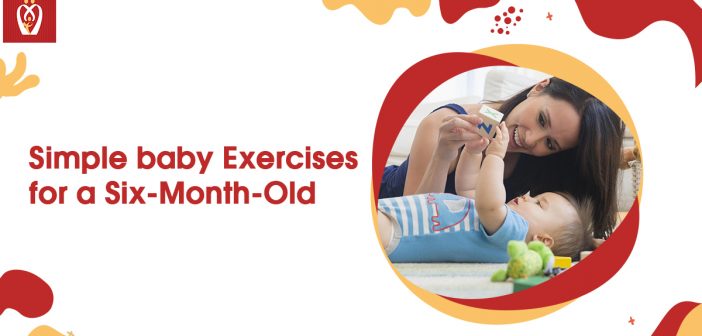When it comes to exercise, you wouldn’t tell babies to drop and give you 20 reps. Physical exercise should be encouraged in all children under the age of 5. That includes, of course, babies. Baby exercises are an essential aspect of their growth. Strengthening the neck and developing hand-eye coordination may help a baby learn to walk via baby exercises.
It’s time to get your baby revved up to move with these baby exercises, which are mainly baby yoga!
Happy Baby
This is a stance that your infant may already be doing without realising it’s a yoga practise for babies. One of the best ways to do this is to place the baby on their back with their legs outstretched. Hold the baby’s feet and swing them from side to side for a while. There is no need to be concerned if your infant cannot independently grasp their own feet. To assist them, gently grip onto their feet, with their knees bent and extended wide, to aid the stretch. Opening the hip muscles and increasing digestion are two of the many benefits of this baby exercise.
Downward Facing Dog
The baby will not be able to accomplish this until they are between 6 and 10 months old when they begin to crawl. This is also one of the other best baby exercises. Instruct your child to stand with their hands on the floor and their buttocks up. Baby should be shown the inversion as a game of peek-a-boo, with the parent gazing at the infant from the top and then from the bottom. Flexibility, motor skills, and overall crankiness are all helped by this amusing stance.
Butterfly Twist
When starting this activity, place the infant on their back and place his or her hands and feet together so that they form a butterfly shape in the air. Help your infant open his or her arms by gently pushing his or her feet toward the tummy. Gently sway your child’s legs from side to side while holding his or her feet in the butterfly position. If the baby’s arms are still wriggling, put your other hand on the baby’s chest and speak in soothing tones to help calm the infant down. Back-and-forth rocking positions like these may aid in the baby’s relaxation and aid in a deeper sleep.
Time for Tummy Rubs
This is one of the most popular baby exercises since it strengthens the child’s head and neck muscles, as well as their ability to move their hands and feet. To avoid a flattened skull shape, this stance is necessary. Take a blanket or a mat and lay your baby on their stomach. The little movements that your infant makes while trying to elevate their head are helping to build stronger neck muscles. Many additional baby exercises may benefit from this ability. While your baby is enjoying tummy time, have them lie on their back in front of you so you can both get some exercise. Stretch over them and watch as your tiny one tries to reach out for a kiss from you!
Football Hold
Under your arm, hold the baby’s body so that it is facing the floor. Make sure that your arm is completely supporting the baby’s tummy and chest at all times. Baby’s neck muscles get a workout as they glance down and around.
Put the Baby on Your Chest
Lie on your back with the baby on your chest for comfort. When you smile at them, your baby will raise its head to gaze at you. This strengthens the muscles in their neck. Make sure you have toys around for your baby to play with while they’re on their belly on the floor. Lift your head and shoulders off the ground while your baby is on your tummy.
Crawling Assistance
For this workout, fold a towel lengthwise many times. Let your child rest on top of it. Both hands should be used to hoist the towel so that the baby’s chest is resting on top of it while their arms and legs are dangling towards the ground. As you move side by side with your baby, he or she will become familiar with the sensations of crawling. You may gradually decrease your grip on the infant until they are able to move on their own!
You may help your 6-month-old baby’s growth by introducing him or her to a variety of baby exercises. As newborns begin to crawl and walk toward the milestone of their first birthday, it’s important to include them in activities that promote their holistic development.
